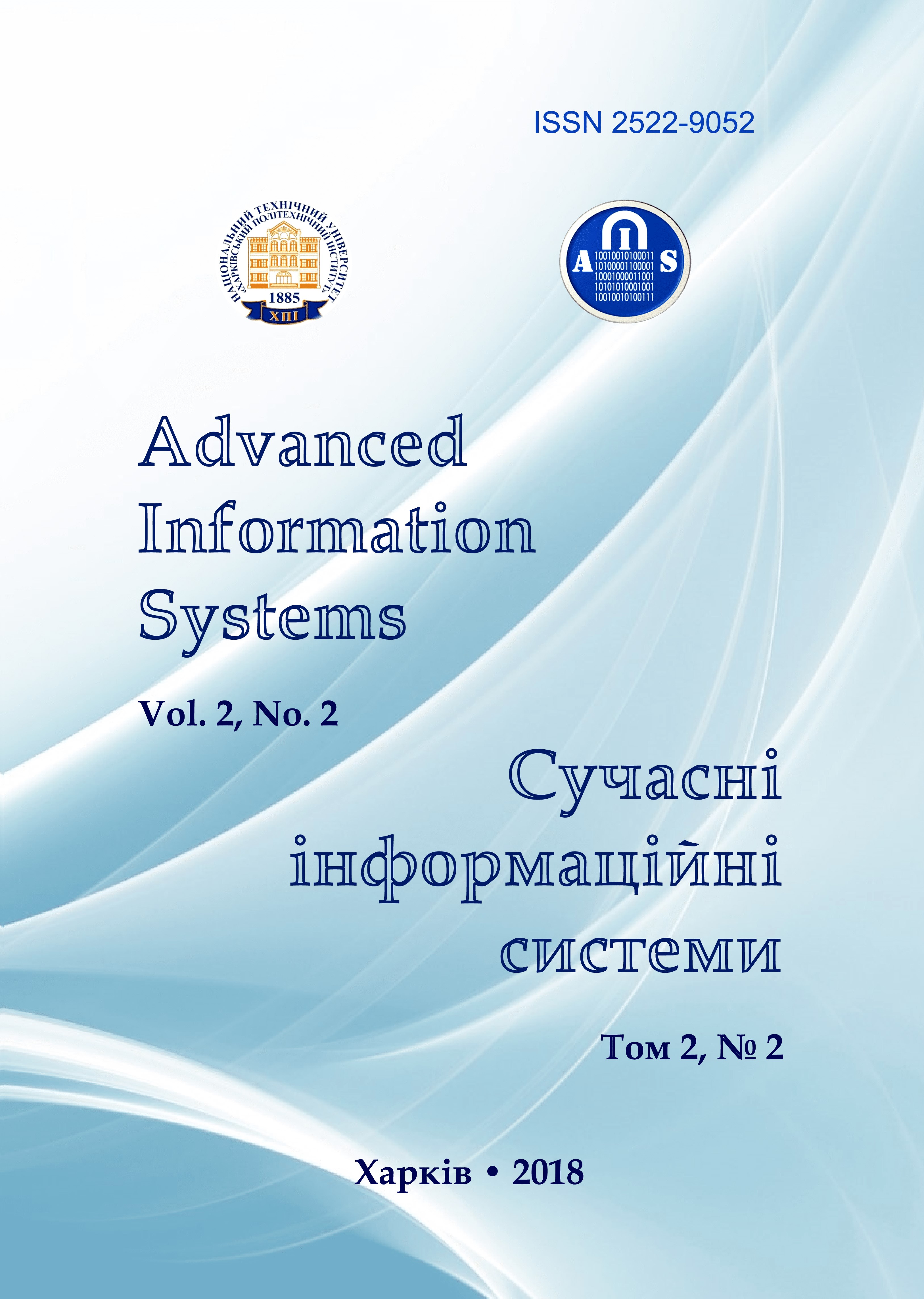Development of the clouds types determination method for ordering the optimal temporary period of space shooting
Main Article Content
Abstract
The subject of the study is a method for determining the types of cloudiness based on data from satellites National Oceanic and Atmospheric Administration of the US Department of Commerce. The object of the study is to monitor the opto-meteorological characteristics of cloudy atmosphere on the basis of space images. The purpose of the work is to increase the effectiveness of the study of cloud cover and increase the informativity of meteorological data to support decision-making in meteorology, air traffic control, and the use of Earth remote sensing data in various spheres of the functioning of society. In order to achieve this goal, the following partial tasks were solved: the creation of cartographic models of clouds and the underlying surface, taking into account the time periods of the photographing; conducting analysis of existing signs of cloud recognition on space images; development and practical implementation of the method for determining cloud forms and the optimal time period for photographing the cloud cover. Cloud templates that define shooting periods provide information about the optimal time of digital data ordering, which greatly reduces costs and optimizes the work with satellite information. Conclusions: determining the optimal time period for ordering high quality images based on proposed cartographic models significantly reduces the cost of solving thematic tasks of geographic information systems. The study of the types of clouds using the proposed methodology makes it possible to trace the dynamics and the process of formation of any types of clouds and with a high probability of non-falsity to predict dangerous atmospheric phenomena. This increases the effectiveness of air traffic control and the use of remote sensing data in all areas of human life.
Article Details
References
Andreev, S.M., Zhilin, V.A. and Topchiy, A.S. (2018), “Method of using computer vision libraries for constructing cartographic models”, Systems of control, navigation and communication, No. 1 (47), PNTU, Poltava, pp. 3-7.
Andreev, S.M., Dmyterko, G.V,, Zhilin, V.A. and Ovcharenko, S.I. (2015), “Methodology for the development of cartographic models of park areas”, Information processing systems, No. 12 (137), KhAFU, Kharkiv, pp. 6-14.
Maltsev, K.A. (2008), Fundamentals of work in the program Surfer 7.0 drive tutorial, Kazan State University, Kazan, 24 p.
Ivanova, I.A. and Chekantsev, V.A. (2008), The solution of geological problems with the use of the Surfer software package drive tutorial, Tomsk Polytechnic University, Tomsk, 92 p.
Maltsev, K.A. (2014), Construction of models of spatial variables with application of the Surfer package drive tutorial, Kazan University, Kazan, 103 p.
Maltsev, E.A., Sirotin, E.E., Perfilev D.A. and Tsibulsky, G.M. (2011), “Measurement of cloudiness in images obtained from the SPOT-4 satellite”, Journal of the Siberian Federal University, No. 2 (5), pp. 229-242.
Aprausheva, N.N., Gorlach, I.A., Zhelnin, A.A. and Sorokin S.V. (1998), “On the experience of automatic statistical recognition of clouds”, Journal of Computational Mathematics and Mathematical Physics, No. 10 (38), pp. 1788-1792.
Astafurov, V.G. and Skorokhodov, A.V. (2011), “Classification of clouds from satellite images based on neural network technology”, Modern problems of remote sensing of the Earth from space, No. 1 (8), pp. 65-63.
Demidova, L.A., Nesterov, N.I. and Tishkin, R.V. (2012), “Segmentation of satellite images using the apparatus of the theory of fuzzy sets”, Bulletin of the Ryazan State Radio Technical University, No. 3, pp. 11-17.
Vetrov, A.A. and Kuznetsov, A.E. (2011), “Segmentation of cloud objects on panchromatic images of the Earth's surface”, Digital Signal Processing, No. 3, pp. 32-36.
Lepsky, A.E. and Bronevich, A.G. (2009), Mathematical methods of pattern recognition, Southern Federal University, Taganrog, 155 p.
Mycel, A. A., Kolodnikova, N.V. and Protasov K.T. (2005), “Nonparametric algorithm for the texture analysis of aerospace images”, Proceedings of Tomsk Polytechnic University, No. 1 (308), pp. 65-70.
